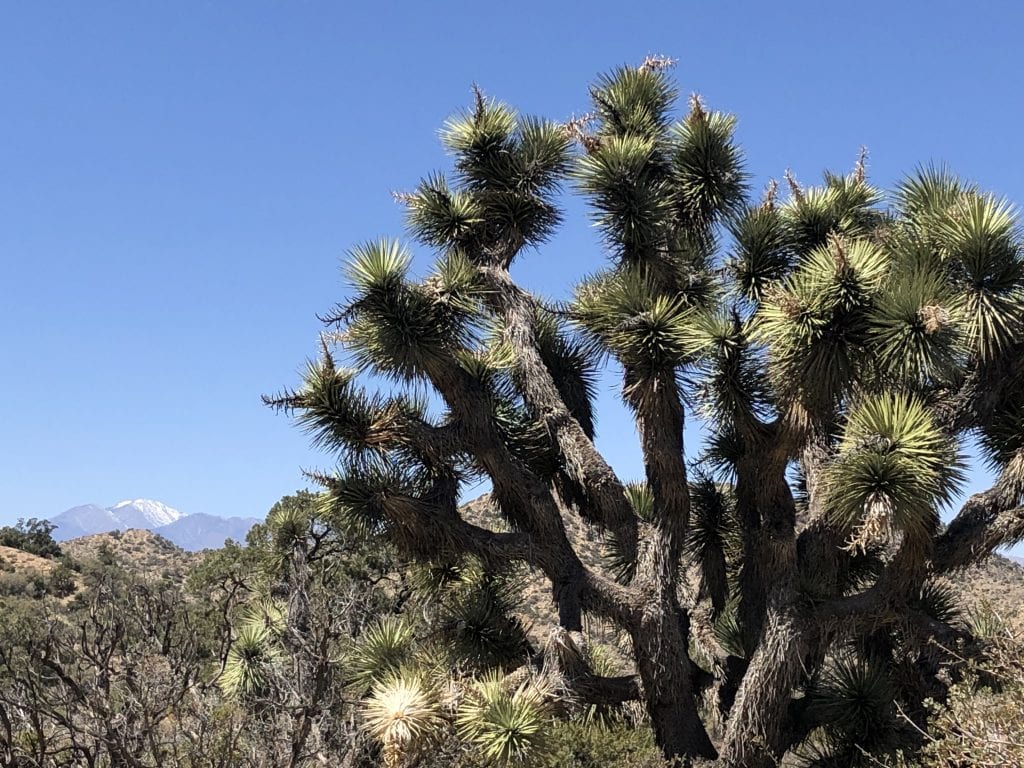While the existential plight of the polar bear losing its critical habitat to climate change is well known, fewer of us are aware of a similar predicament facing one of the most iconic and beloved species in our backyard: the Joshua tree.
Already stressed by a changing climate, the pre-historic Joshua tree has been pushed even farther toward the brink of impending extinction by two recent events. During last summer’s devastating California wildfire season, a three-day wildfire furiously swept across the Joshua tree range, dealing a cruel blow to an already imperiled species. The blaze burned 43,273 acres—25 percent of the contiguous Joshua tree forest—that included roughly 1.3 million of the iconic trees. With the proliferation of highly flammable non-native grasses, coupled with a warmer and drier climate, such fires have been forecast to occur with more frequency and intensity in the decades to come.
Though they are long-lived, hardy desert plants, Joshua trees only thrive within a narrow window of environmental conditions. In the decades ahead, the land where those conditions will exist will shift far faster than the trees themselves will be able to naturally move through germination. To ensure the survival of these slow-moving plants, we need to protect their current and future range both by generally addressing greenhouse gas emissions and by specifically curtailing damaging human activities—such as off-roading, overgrazing, or building large-scale energy projects—in places critical to their survival. The most effective way to protect this habitat is by placing the Joshua tree on the list of threatened species under the federal Endangered Species Act.
This leads to the second devastating blow to the Joshua tree in recent years: the 2019 decision by the US Fish and Wildlife Service to deny a petition to list the Joshua tree as threatened under the Endangered Species Act. At the time, scientists had abundant evidence that increasing temperatures were already causing the species’ range to contract. Climate models show this loss could become significantly worse over the next few decades as prolonged drought takes hold and the frequency and intensity of wildfires increases. In several of the most current climate models, the zone of appropriate climate for the tree will shift drastically by century’s end and, in the most severe scenario, we will witness a 90 percent reduction of its distribution in its range starting in 2070. Despite the Fish and Wildlife Service’s standard to employ the “best available science,” and despite the clear mandate of the Endangered Species Act to protect both flora and fauna from extinction, the federal government decided to bury its head in the desert sand, ignore the evidence, and conclude that the Joshua tree had “enough resiliency” to survive the years ahead.
The Joshua tree, along with the plants and animals that depend on it and the many nature lovers that enjoy being near it, need the Fish and Wildlife Service to reverse its decision. The stakes could not be clearer: inaction means that, within many of our lifetimes, Joshua Tree National Park may very well lose the park’s namesake.
To avoid such a lamentable day, WildEarth Guardians is challenging the Fish and Wildlife Service in court. You can lend your support to our lawsuit by urging Interior Secretary Deb Haaland to take action. We must act swiftly by listing the Joshua tree under the federal Endangered Species Act and, more broadly, by acting to substantially curb greenhouse gas emissions. Such action will give these ancient desert dwellers a fighting chance to survive.
